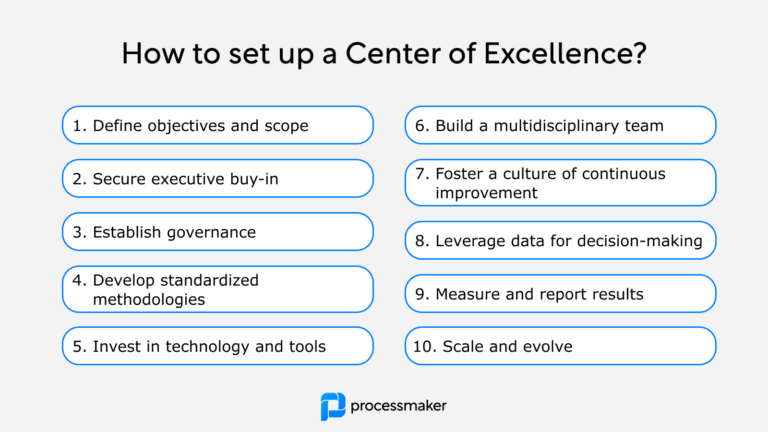How well do you truly know your business operations? Based on a recent survey by Signavio, only 2% of organizations have created models of all their business processes. The other 98% of organizations who have partial — or no process models at all — will come to find they are overlooking costly performance drains.
Modeling processes is just one piece of a greater initiative that will be essential for a competitive edge in the new decade: business process management (BPM).
When companies quickly adopt patchwork solutions to save costs on today’s pressing issues, entire processes lose agility. Each activity in the system begins to define the success of the rest, regardless of whether it’s valuable or necessary.
BPM wants to eliminate the wasted energy in your organization. Using a few core goals, BPM helps you:
- Know how your process is performing
- Learn how to get more from it
- Make the change to get closer to where you want to be
To join the 2% of organizations creating more manageable, productive, and profitable workflows, these goals can guide your use of BPM.
Centralize your data with a BPM software
Despite being more connected than ever, enterprise teams often duplicate their efforts because they’re unaware that another department already has the data they need.
Globally-distanced departments leave less than 44% of workers knowing where to look for the info that fuels their daily tasks.
BPM aims to minimize duplicate, dated information to help your teams get organized. Your teams will be empowered to bridge the gaps and regain control of information, whether on their customers or the organization itself. When data is organized and centralized for rapid recall, your teams are quicker to analyze, iterate, and improve.
Share and consolidate your data
Data is only powerful if it’s shareable. Many modern enterprises unfortunately have yet to escape the pitfalls of isolated department data silos that diminish the power of their insights.
Customers pass through many different departments, each using their own databases, apps, and other systems. This gets messy when changes in one area don’t auto-carry to others.
- For example, RingCentral discovered that over 70% of employees say how much they must communicate has become a significant challenge. Miscommunication can weigh down global companies that share performance reports across languages and cultures to hundreds of locations across the globe.
- By the time data is accurately passed on via back-and-forth emails and hours of app-switching, insights might be too dated to be useful. Worse, multiple versions of the same report likely enter the wider organization and further obscure the “true” data.
BPM digs into how your information flows within — and across departments — to spot and resolve the disconnects.
Replacing manual processes with automated, self-maintained data syncing can help faster, smarter decision-making within the enterprise. Combined with a centralized view into the data, employees can collaborate with the confidence that the data they are seeing is the one truth.
Visualize your process by mapping
To find the ideal solutions for your process flaws, BPM prioritizes helping you see exactly what your processes look like. As teams map each step, action, and result in visual charts, many find they’ve falsely assumed certain parts to be essential or inevitable.
BPM encourages your teams to reconsider what activities actually bring value to the business and the customers.
Process mapping via low-code tools with drag-and-drop flowcharts help your team pick apart the “why” behind every action. Once your team puts all their unconscious actions on paper, they can cut or reduce the fat to leave daily operations running lean.
Many organizations find that they’re able to reformulate their repetitive processes into streamlined, automated templates. Automating helps them discover the true value of moving employee focus from tedious labor to generating high ROI insights.
Govern your policies with BPM
The friction of change can delay employees from adopting new methods. Without seeing the larger impact of their change, employees naturally find the path of least resistance and slow your process upgrades down.
BPM can help teams track exactly where policies are being followed and ensure they’re being enforced. Introducing better process visibility via BPM also opens enterprises up to stronger goal-setting — as well as setting policies that accurately align with these goals.
For consistent governance, your policies must make sense to the employee. The clear benefits of doing things differently should inspire change for their own gain and that of the wider enterprise.
Where process gaps can reveal your true needs, working outwards from these needs can clarify goals at each organizational level — from enterprise-wide to departments, into internal teams, and drilling down to the individual employee.
Receive process feedback
Of course, no process management is complete without continuously getting better. BPM is far from a one-and-done task. It is an entire mindset shift within your organization. Instant contextual feedback is essential for intelligent change.
Without a clear view into frontline insights, management lacks the ability to refine for a better bottom line. BPM emphasizes watching and measuring processes for reliable adjustments. The priority becomes moving from ad-hoc solutions to intentional change for powerful, forward-thinking decisions.
Business process management ultimately brings coordination back into an organization. Enterprises find that when they can see clearly, their newfound resilience and agility take the burden out of navigating an unknown future.





